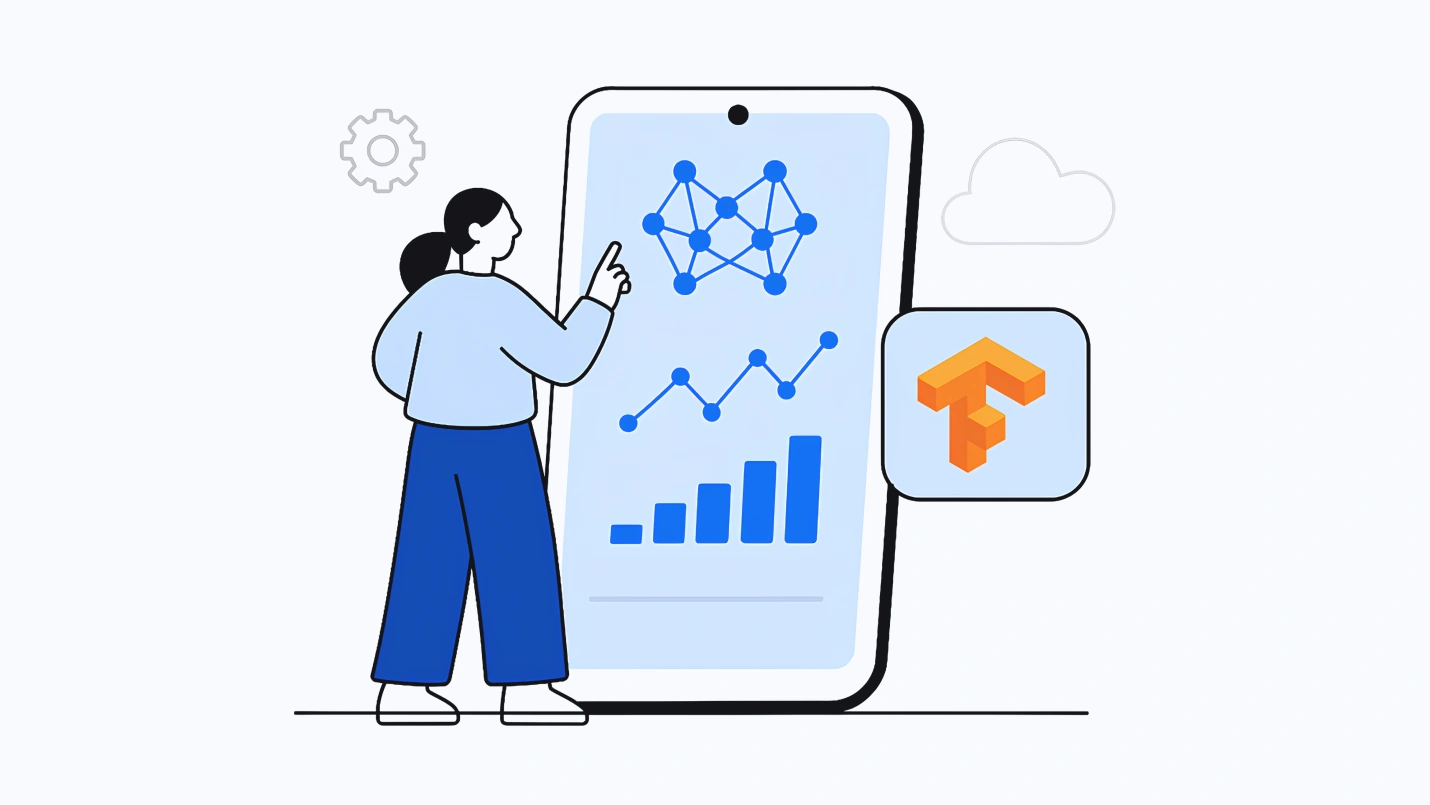In the new omnichannel paradigm, where multiple digital touch points are connected to offer a seamless customer experience, the need for intelligent apps becomes essential. Mobile app development has taken a new definition with phenomenal technological advancements. Thanks to machine learning (ML) and deep learning techniques, it is now possible to provide intuitive, smart and responsive apps. There are a lot of open-source software libraries for Artificial Intelligence (AI) that have become popular. However, TensorFlow stands out from the competition.
TensorFlow is becoming a buzzword in machine learning. Programmers are moving towards TensorFlow to build and run deep learning systems. This makes deep learning tools accessible to even SMEs.
The combination of big data and neural network algorithms of TensorFlow helps unlock the value of data businesses. This improves productivity and offers an edge over the competition. Machine learning with TensorFlow adds extraordinary power to Intelligent mobile apps.
What is TensorFlow In Machine Learning?
TensorFlow is an open-source machine learning platform based on deep learning neural networks. It combines machine learning with deep learning algorithms and uses them via a common symbol. It uses a simplified programming language, Python, to build mobile apps. Python offers a front-end API and executes the apps in C++, a high performing object-oriented programming (OOP) language. Its design enables more people to generate intelligent AI systems.
For easy understanding, debugging, and optimization of TensorFlow programs, its creators came up with TensorBoard, which is a suite of visualization tools. They allow you to visualize graphs to plot quantitative metrics on executing the graph and display additional data, such as images to pass through it.
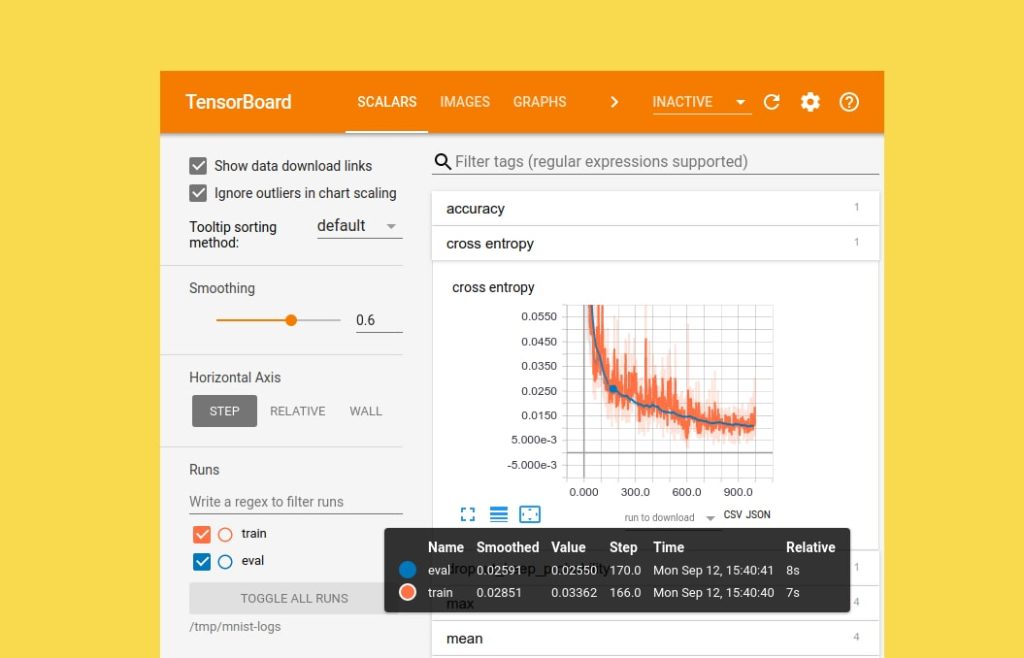
Example: Coca-Cola, Airbnb, and Intel are some of the big brands that are implementing AI technologies made in TensorFlow.
Why TensorFlow has Emerged as a Winner?
TensorFlow is considered a low-level toolkit for running complicated math. Listed below are its advantages and disadvantages that shows its popularity:
Advantages of TensorFlow in Machine Learning
- It can be customized and is open-source.
- Its responsive build allows easy visualization of every aspect of a graph.
- Owing to its platform flexibility, parts of it can exist standalone, and others can be merged.
- When it comes to distributed computing, it is identifiable on both CPU and GPU.
- Machine learning algorithms allow you to compute several derivatives of values to other values, thus leading to a graph extension.
- It offers advanced support for queues, asynchronous computation, and threads.
Disadvantages of TensorFlow in Machine Learning
- To operate, a proper understanding of machine learning, as well as advanced calculus and linear algebra, is necessary.
- GPU memory conflicts with Theano (a Python library that permits defining, optimizing, and evaluating mathematical expressions, involving multi-dimensional arrays effectively) when imported in the same scope.
- Does not support OpenCL (Open Computing Language)
TensorFlow Use Cases
TensorFlow is an open-source AI library that utilizes data flow graphs for building models. It is used for classification, perception, understanding, discovering, prediction, and creation.
Following are the use cases of TensorFlow:
1. Sound or voice recognition
Sound-based apps constitute one of the most common uses of TensorFlow.
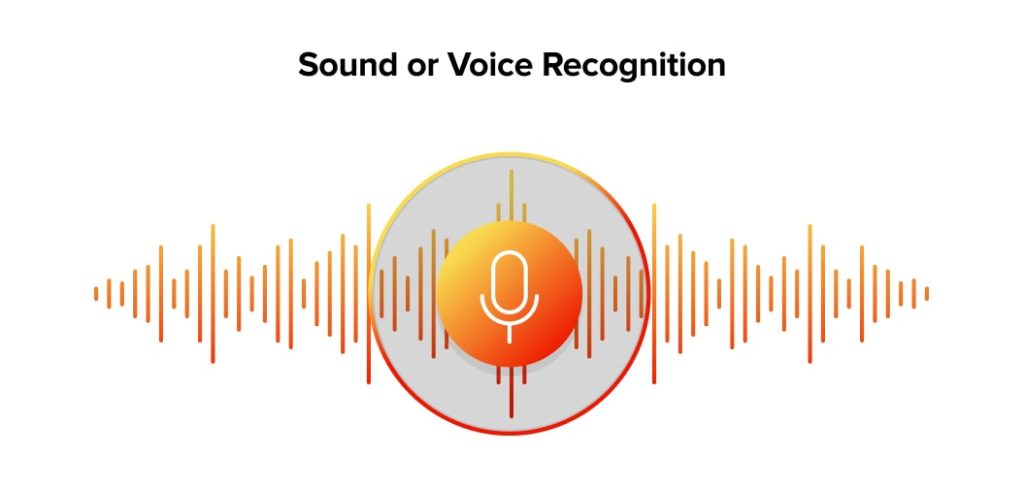
Through proper data feed, it is capable of capturing the following audio signals:
- Voice recognition – used in IoT, automotive, security, and UX/UI
- Voice search – used in telecom mobile manufacturing
- Sentiment analysis – used in CRM
- Flaw detection (engine noise) – used in the automotive and aviation industry
Sound-based apps are largely used in CRM. For example, TensorFlow algorithms assuming the role of customer service representatives can direct customers to the required information, quicker than actual personnel.
Apple’s Siri, Google Now for Android, and Microsoft Cortana for Windows Phones are the most common use cases of voice search. Identifying languages is another use of voice recognition. Speech-to-text apps define snippets of sound in bigger audio files and transcribe the spoken words as text.
2. Text-based applications
TensorFlow use cases also include text-based apps, including sentimental analysis (CRM, social media), threat detection (social media, government) and fraud detection (insurance, finance)
Identifying languages is a widespread use for text-based apps. Below are a few examples:
Google Translate
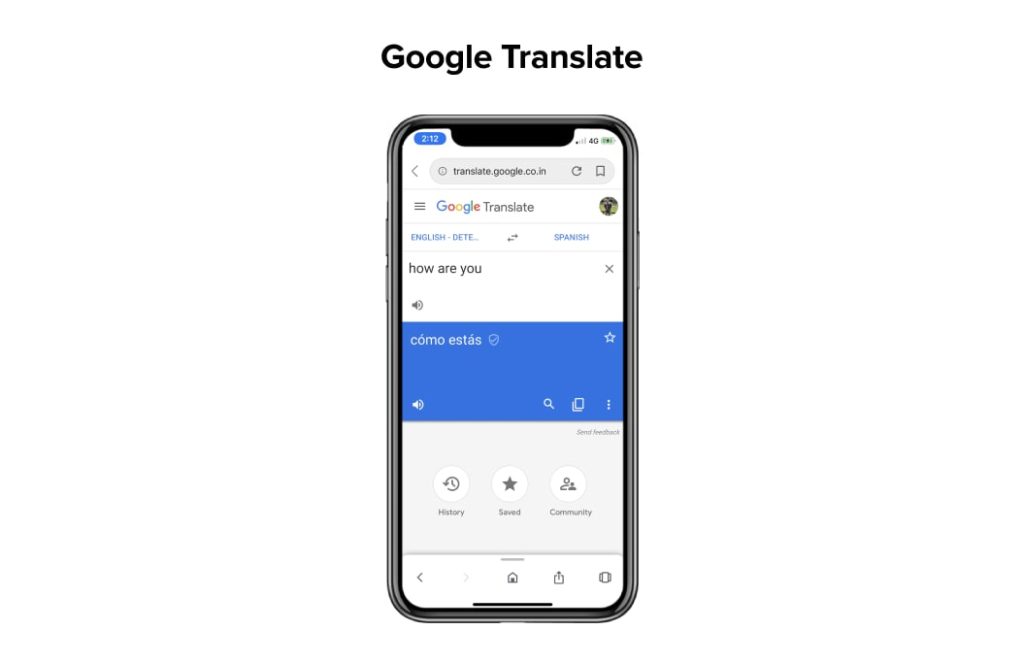
It supports 100+ language translations and works on any app. It also includes translating jargon into simple language.
Text Summarization
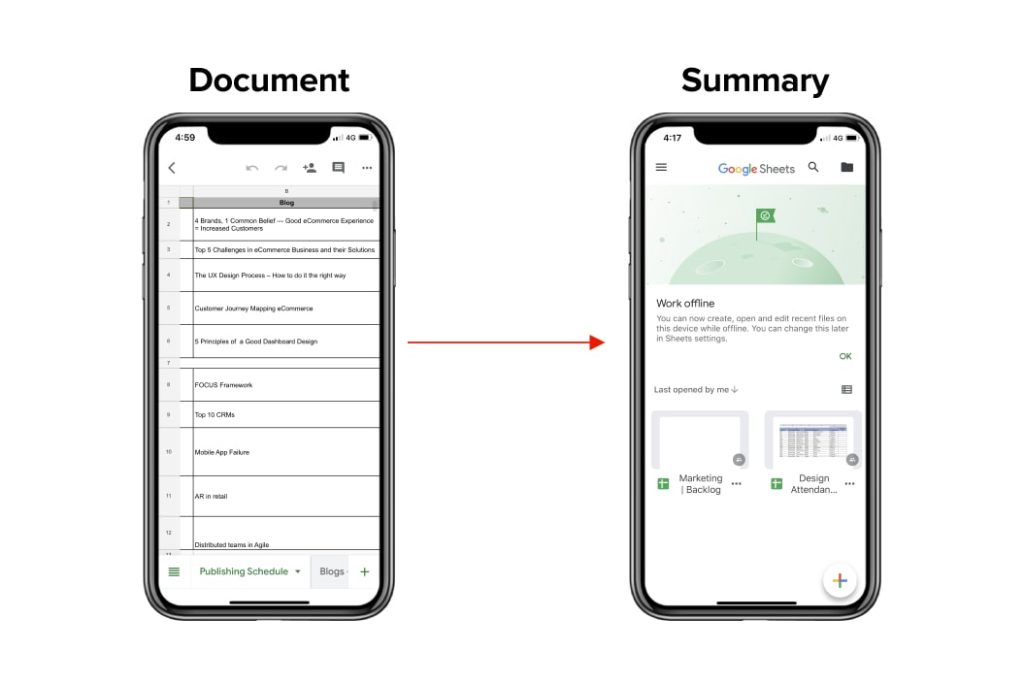
Google identified that through sequence-to-sequence learning, shorter texts can be easily summarized. For example, producing news article headlines.
SmartReply
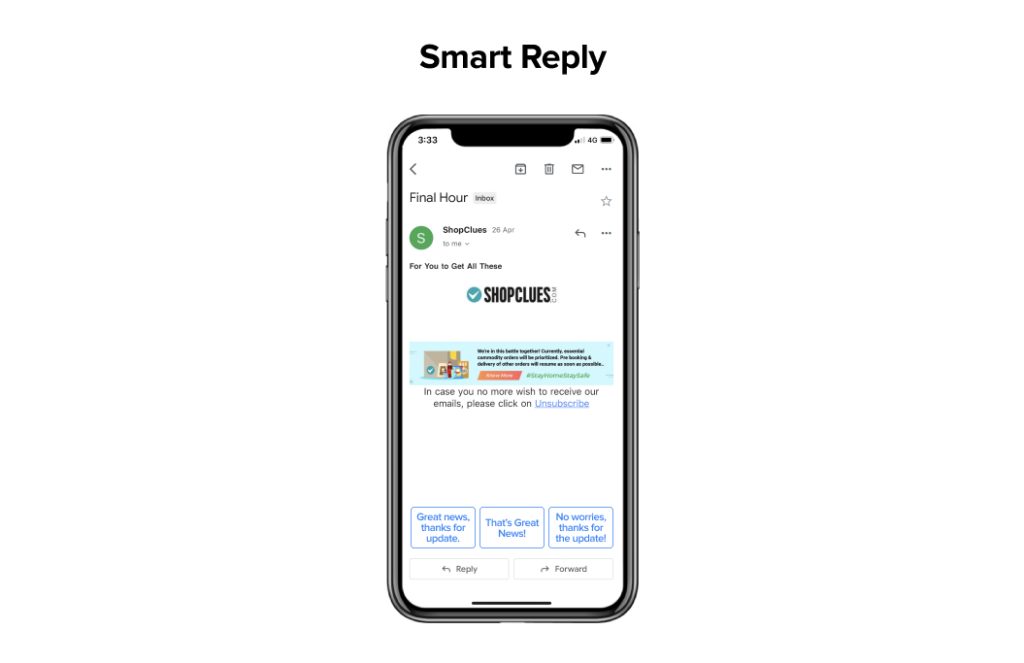
It generates automatic email responses quickly.
3. Image recognition
Image recognition recognizes as well as identifies people and objects in images, to understand both the content and context better.
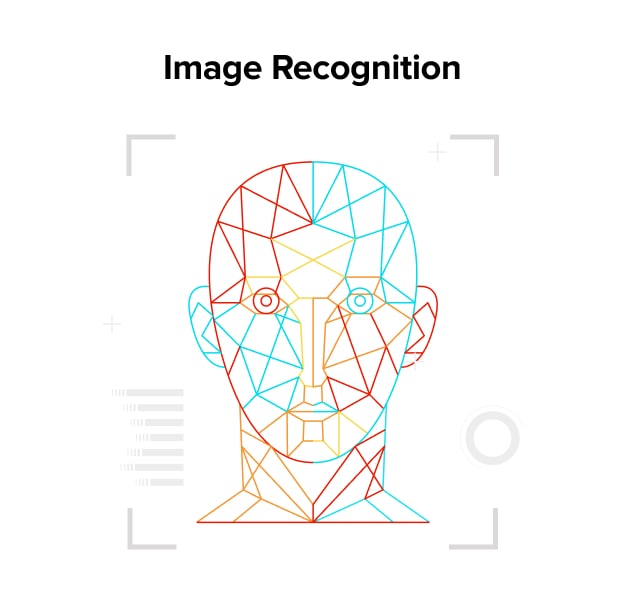
It is widely used across social media channels, in the telecom and mobile manufacturing industries, for face recognition or detection, image search, motion detection, machine vision, and photo clustering. It may also be used in the automotive, aviation, and healthcare industries.
TensorFlow image recognition algorithms are capable of classifying and identifying objects within bigger images. It is used in engineering apps, in determining shapes for modeling purposes (for example, 3D space construction from 2D images), and by social media for tagging photos (for example, Facebook’s Deep Face). For example, by analyzing about 600+ images of trees, TensorFlow would be able to identify an unknown tree.
This technology is popular in the healthcare industry too where its algorithms have the capability of processing more information by identifying more patterns than humans. Furthermore, computers are now able to review scans and detect illnesses better.
4. Time series
TensorFlow time series algorithms enable non-specific forecasting periods, and aids in generating their alternative versions.
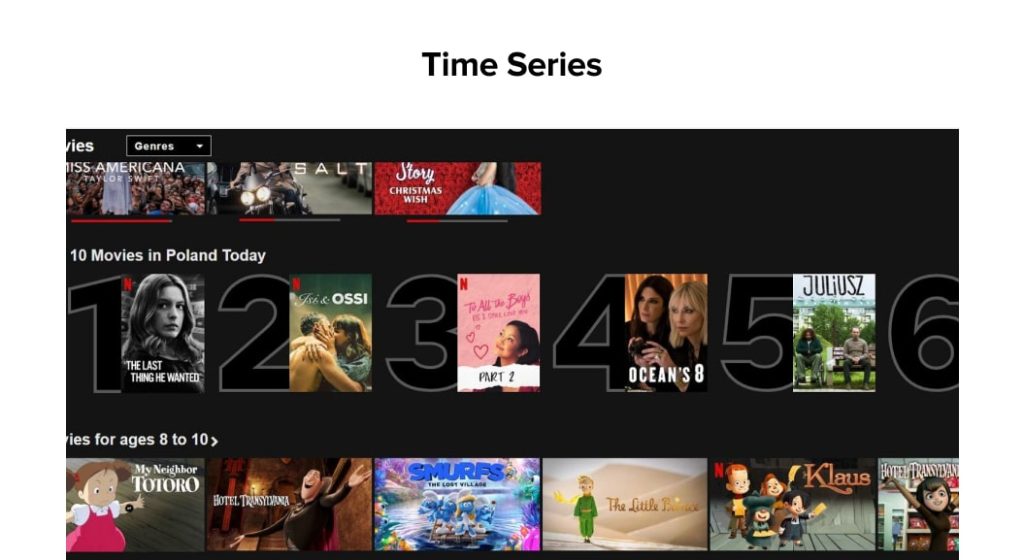
An everyday use case here is a recommendation. Leading companies such as Amazon, Google, Facebook, and Netflix, can analyze customer interactivities through this algorithm, and then compare it with other users to gauge a customer’s buying mindset.
These recommendations evolve with time. For example: offering customers gifts or recommending TV shows they may enjoy.
Other uses are in the field of accounting, finance, security and IoT, government, etc.
5. Video detection
TensorFlow is also used in motion detection, security, airports, real-time threat detection in gaming, and UX/UI fields. Further, universities are working on large-scale video classification datasets, such as YouTube-8M. This helps speed up research into large-scale understanding video, transfer learning, representation learning, and domain adaptation approaches, for video.
Other Uses
As TensorFlow is an open-source library, you can use it to build different machine learning algorithms on it, such as decision trees or k-Nearest Neighbors. Below is an ecosystem of TensorFlow.
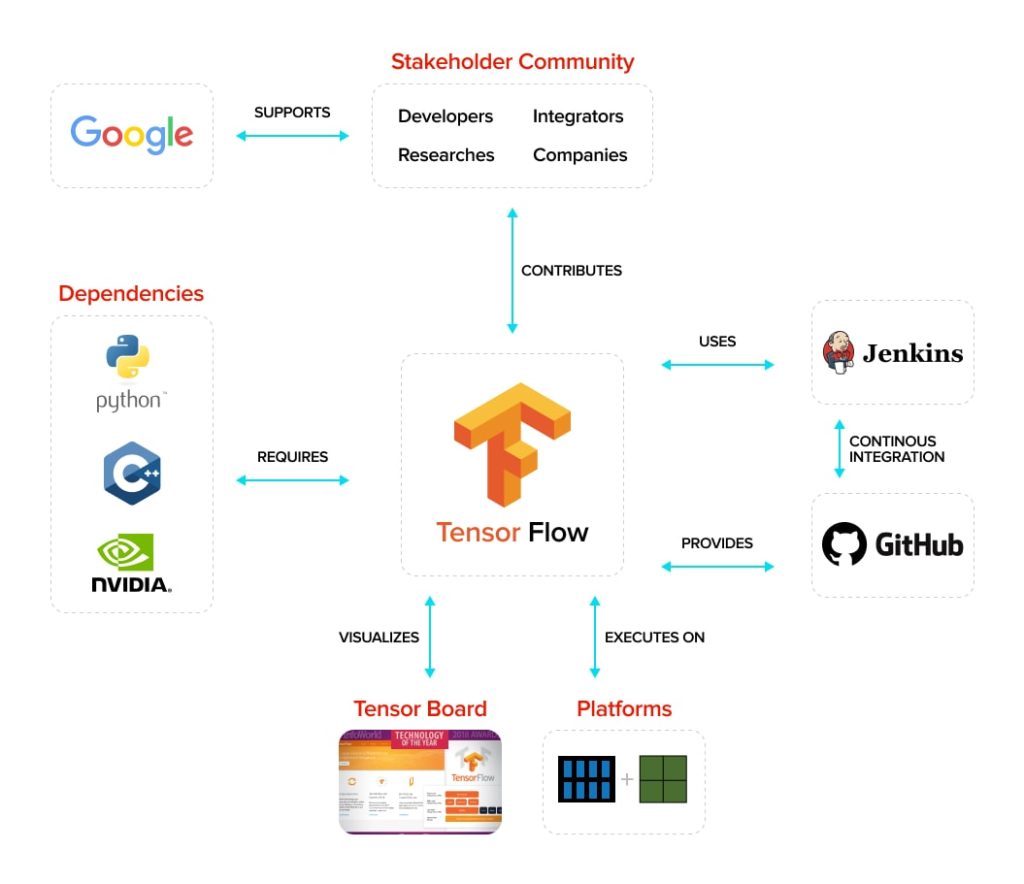
As shown above, TensorFlow is well integrated and is dependent on GPU processing, Python, and C++. It can integrate well with container software such as Docker, GitHub, etc.
Conclusion
Machine learning is undeniably on the rise, fundamentally influencing how we interact with mobile devices and beyond. Leveraging the power of TensorFlow allows for cutting-edge mobile app solutions across various sectors, from healthcare and recommendation engines to social media sentiment mining. As TensorFlow continues to drive innovation in applications like Google Search and Google Translate, it pushes the boundaries of artificial intelligence.
If your business seeks to harness this immense potential and develop bespoke solutions, partnering with an experienced AI development company can provide the comprehensive services and innovative AI development solutions needed to turn your vision into reality. Google’s TensorFlow, an open-source library that caters to large-scale machine learning and numerical calculations, is indeed here to stay, offering a robust foundation for your next intelligent application.

